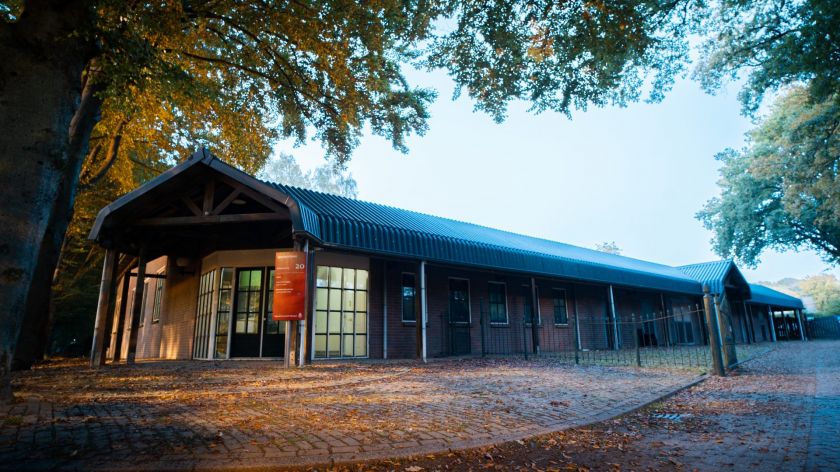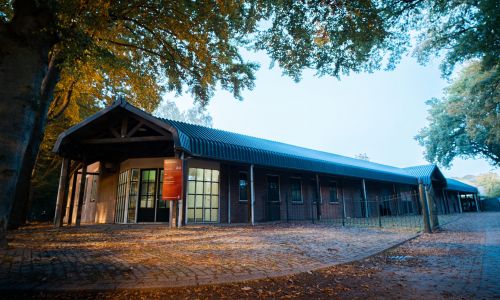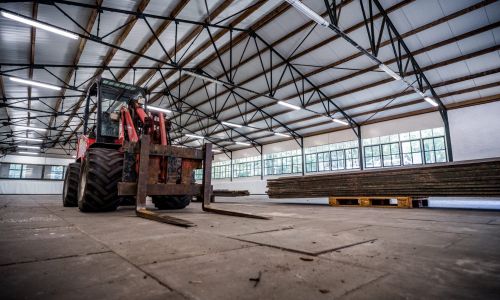Why emergency shelter Brakkenstein will probably stay for longer (and seven other questions about the asylum crisis)
-
 The former stables on the Radboud campus. Photo: Johannes Fiebig
The former stables on the Radboud campus. Photo: Johannes Fiebig
At the end of this month, 200 to 250 asylum seekers will be housed in the old riding school in Prak Brakkenstein, which is owned by Radboud University. Why is the emergency shelter necessary? Who exactly is coming to Nijmegen? And until when will the asylum seekers stay? An overview of what is currently known.
Why is emergency shelter for asylum seekers on the grounds of Radboud University necessary?
Because the regular asylum seekers’ centres in the Netherlands have been full for some time now. The registration centre in Ter Apel, where everyone who seeks asylum in the Netherlands needs to register on arrival, also has insufficient room to house all new asylum seekers. Last summer, there was a huge shelter crisis at Ter Apel. The international aid agency Doctors Without Borders even had to send a team to supply healthcare to asylum seekers sleeping outside the gates.
Therefore, asylum seekers are temporarily – during their registration procedure – housed in so-called crisis emergency shelters. The government has asked several municipalities, including Culemborg, Zaltbommel, and Nijmegen, to set up such shelters. These are often sports halls.
Nijmegen being asked to provide an emergency shelter is no coincidence: the former Prins Hendriks barracks at the Dommer van Poldersveldtweg in the eastern part of Nijmegen has been used as an asylum seekers’ centre since 1994, soon an extra temporary centre will set up in de Stieltjesstraat. Two cruise ships, among other things, in the Waal harbour are currently hosting Ukrainian refugees. Furthermore, Nijmegen, together with neighbouring municipalities, has provided shelter in emergency situations many times in the past. Nature reserve Heumensoor, near the Radboud University campus, hosted Syrian refugees in 2015-2016 and Afghan refugees just last year.
Why can other asylum seekers’ centres and the registration centre in Ter Apel not handle the situation?
Because there is too little flowthrough of status holders – asylum seekers with a residency permit – to regular houses. These asylum seekers who should actually be passing through occupy spots in asylum centres that are meant for other asylum seekers.
How is decided which asylum seekers move from Ter Apel to Nijmegen?
That depends on the demand at the time, says a spokesperson for the Central Agency for the Reception of Asylum Seekers (COA). ‘These are generally people who enter via Ter Apel, or people who have already been accommodated in a temporary emergency shelter from Ter Apel. Usually, these are also people who are still at the beginning of the asylum application procedure.’
‘Most asylum seekers are from Syria, Eritrea, Yemen, and Afghanistan’
Which countries are the asylum seekers from?
‘Most asylum seekers in the Netherlands are from Syria, Eritrea, Yemen, and Afghanistan’, says the COA spokesperson. ‘But they are also from several other countries, such as Turkey, Morocco, or Pakistan.’
Will so-called ‘veiligelanders’ come to Nijmegen? These are asylum seekers who come from countries considered safe by the Netherlands, such as Tunisia, Algeria, and Morocco. Last summer, a small group of these ‘veiligelanders’ caused a nuisance at the application centre in Ter Apel.
In an earlier press release, the municipality of Nijmegen announced that the emergency shelter will not house people of who it is already known that they have no chance at asylum. Still, that cannot be ruled out completely, the COA spokesperson said. ‘The people who are housed in Park Brakkenstein are at the beginning of the asylum procedure. It could be that these also include refugees from safe countries, but these are filtered out as much as possible at the beginning of the procedure.’
Will both men and women be housed in the riding school?
That is possible, says the COA spokesperson. Still, experience shows that the majority are men travelling alone, who – after obtaining status – let their families travel after them. But families with children can also be placed.
And underaged asylum seekers?
Generally, they are housed in separate locations. The COA aims for as few minors as possible to be housed in the same locations as adult asylum seekers. But that also depends on how much demand for room for underaged refugees there is at that moment.
How long must the asylum seekers remain in Park Brakkenstein?
At the end of August, the government made an agreement with municipalities, provinces, and security regions, the so-called asylum deal. In it, it was agreed, among other things, that municipalities must make every effort to provide housing for twenty thousand status holders currently residing in asylum centres before the end of this year. Leaked forecasts from the COA showed that there may be a shortage of ten thousand places even after 1 January.
What that means for the crisis shelter in Park Brakkenstein is not clear at the moment. Four mayors, including Nijmegen mayor Hubert Bruls, threatened to stop crisis reception after 1 April if there is not more clarity on the distribution of asylum reception soon.
The COA spokesperson also said that the emergency shelter in Brakkenstein will probably stay there ‘until the first quarter of 2023’.


